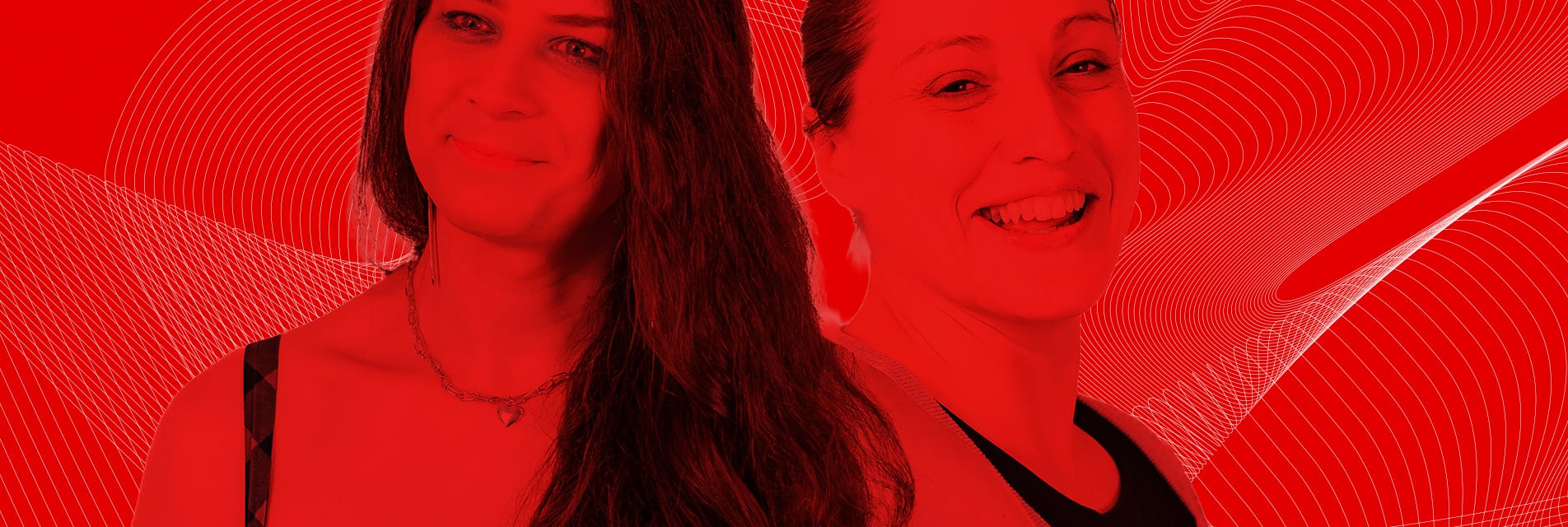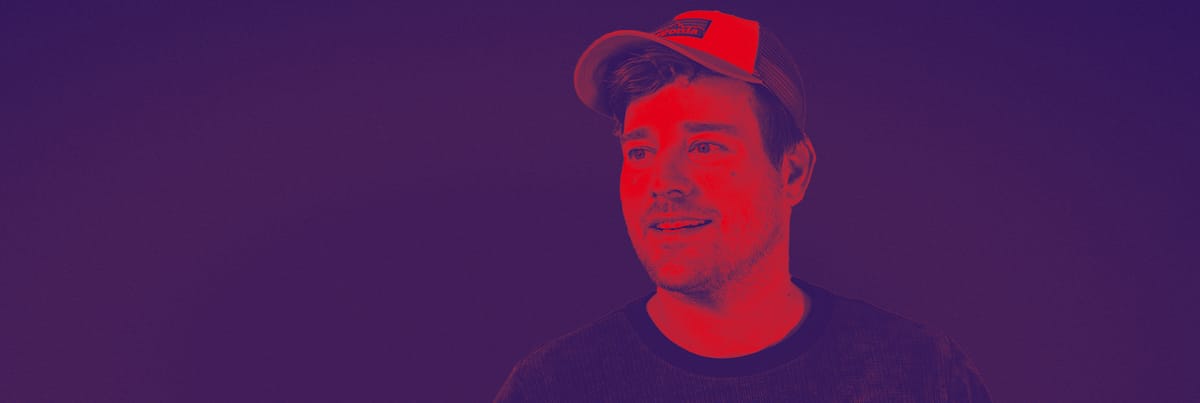Diversity remains an ongoing challenge for tech companies; having a homogeneous team remains the norm, as with many things in life, how you handle this is paramount.
Transparency drew me to madewithlove; their openness was refreshing and unlike what I had previously experienced. For topics such as diversity, it can be the tiny details that affect how people feel, actions speak louder than words when creating diverse workplaces.
Throughout my interview process, I felt treated as a human the company wanted to know, not just another candidate moving through a hiring system. With transparency as the cornerstone, many other strategies can be explored when attempting to build a diverse team.
The early pipeline
The efforts toward expanding diversity should begin before candidates apply to your company, and it can be beneficial to approach this as a long-term commitment as opposed to a one-off initiative. Expand your reach, rather than advertising jobs in limited places or recruiting exclusively from universities or existing networks. Connect with organisations representing underrepresented groups, along with meetups and conferences. If you have mentoring capabilities, coding bootcamps can be worth exploring as they can be more accessible than a traditional three-year university course.
Let's examine two contrasting examples:
HardHat Innovations, a UK-based construction company, advertises on LinkedIn and contacts various coding boot camps outside London. They attend conferences and share job openings through meetup groups. The company runs in-house workshops for developers several times a year. They also advertise positions through universities with diverse computer science programs.
BrickStone Works, another UK-based construction company, has a team of white males. They focus on hiring graduates exclusively from elite universities' Computer Science departments. The problem is that women make up the minority of these programs, creating an extremely narrow pipeline. No matter how unbiased their hiring process is, achieving gender diversity would be nearly impossible with such a restricted approach.
Removing gender bias
Even with the best intentions, bias can easily slip into your hiring process and take some time to be detected. You can mitigate this by implementing a structured interview process that undergoes regular review. Where possible, conduct anonymous reviews of résumés to prevent gender or name-based bias. Ensure all candidates receive the same questions and give them a fair time to answer them. If you are setting technical assessments, be mindful that not everyone's home life can support a rapid turnaround, and this certainly shouldn't be a metric. Lastly, ensure everyone involved in the hiring process receives adequate and equal training. So, to summarise, practically speaking, you could take the following steps:
- Anonymise CVs before reviewing them - this guards against bias
- Use consistent rubrics to assess candidates - this makes the process fair
- If testing technical abilities, offer live interviews OR take-home tests. If you offer the latter, give the candidate fair time to complete the work - this opens the doors to all backgrounds.
Gender neutral language
How you word job descriptions matters– it is often a candidate's first impression of your company. Tools can help identify biased language, but certain words generally tend to be gender-coded. Common male-coded words include "competitive," "confident," "lead," and "analyse," while female-coded words include "understanding," "dependable," and "supportive". Terms like "manpower" should be avoided entirely. The goal isn't to alienate male applicants but to find balanced language that appeals to all candidates. Emphasising collaboration and team aspects rather than individual heroics can help create more inclusive job postings.
Tooling such as Texio can assist here. As an example, an advertisement for "battle-tested ninja code warriors to crush problems and attack the roadmap” could become more inclusive by “looking for developers to join their diverse team and help efficiently advance through their roadmap.”
Flexible working
Remote options, flexible hours, and supportive parental leave policies appeal to candidates with varied backgrounds and life circumstances. While COVID accelerated these practices, some companies have since regressed. Looking back at our example companies:
HardHat Innovations maintained remote work after the pandemic, having discovered its effectiveness. They implement core hours (9 am-2 pm) while allowing team members to schedule their remaining hours around personal needs. This approach enables them to recruit developers internationally, expanding their talent pool. The company offers part-time positions and genuinely encourages flexibility rather than using it as a recruitment tactic.
BrickStone Works reverted to mandatory office attendance post-pandemic despite team productivity during remote work. They enforce rigid schedules; their lead developer Bob, was told by the CEO that it was "important for optics" that he arrive by 8:59 a.m. daily. Although their job postings advertise "flexible hours," this misrepresentation has led to faster turnover.
As part of this article I asked Charlotte Grace - a software engineer here at madewithlove. What are the benefits of hiring across different countries and cultures?
One thing I'd love to see highlighted is the importance of hiring across different countries and cultures. Geographic diversity brings massive value too, like different time zones, languages, cultural approaches to problem-solving, and unique experiences all feed into a much richer collaboration and problem-solving approach. When you hire internationally, you're breaking out of one cultural perspective and inviting in people who might challenge assumptions, spot completely different edge cases, and offer fresh ideas you wouldn't find in a more local team.
It also leans a bit into inclusivity, like it's about being mindful so that everyone feels like they belong, like their opinion matters and isn't feeling left out because of time zone differences. If the team is spread out more globally, companies have to be more deliberate about creating a culture that works for everyone, not just for people living in the same city who share the same perspectives. Otherwise, you risk losing the benefits that diversity brings.
How does geographic diversity benefit remote companies when working with international clients?
What I think is important, especially for a remote company like madewithlove that works with clients all over the world, is how geographic diversity can actually be a massive strategic advantage when serving international clients. If, for example, a South African company approaches us for help with their platform, it might make a big difference when there's someone on our team who understands the local context, the market, the language or cultural nuances. I think it can instantly build trust and create a stronger connection.
Also, when your team is spread across different countries and time zones, you can't just rely on quick in-person chats or everyone being online at the same time. You have to be more intentional about how you work together. I think this kind of shift can benefit everyone
We need role models
In an ideal world, candidates would see diverse role models in leadership positions. Although examples can be found, such as Meri Williams, CTO of Pleo and Grazia Vittadini, CTO and Executive Board Member of Lufthansa, they are few and far between. As a woman in tech, I remember wishing for senior female mentors early in my career. While this remains the ideal, I recognise the reality of the current industry. When female leadership is limited, I look for clear progression pathways, growth opportunities, mentorship programs, and other forms of diversity that demonstrate a genuine commitment to inclusion. Equally, be mindful of over-advertising your diversity, as this can backfire even if it is well-intended- nobody wants to be treated as a token employee.
A diverse interview panel
Having a diverse interview panel benefits both the company and the candidates. It creates a positive first impression for applicants while ensuring multiple perspectives.
HardHat Innovations has evolved from all-male interview panels to intentionally diverse ones. They maintain a pool of trained interviewers from different backgrounds. This approach has improved their offer acceptance rates.
Benefits packages
Benefit packages can unintentionally favour specific demographics as your candidate pool will have varying priorities. While some employees value flexible schedules and remote work opportunities, others prioritise healthcare, parental leave, or professional development. Therefore, offering free meals to encourage working late, along with gym memberships, is more likely to appeal to employees without family responsibilities.
Inclusivity
Creating clear pathways for promotion and growth represents one of the most significant opportunities for meaningful change. These pathways must be actively supported and maintained. Available evidence strongly suggests that diversity gaps won't be resolved without deliberate, sustained effort from leadership.
Rather than promoting diversity through marketing campaigns, subtly showcase it through genuine opportunities and representation. Diverse leadership naturally creates small but meaningful changes that many won't notice, but that eliminate blind spots and improve decision-making. After all, the most powerful diversity initiatives are subtly ingrained into a company's culture, not announced with a loud marketing campaign. This then creates the most significant wins of all, where it has simply become a way of life for a company.










Member discussion